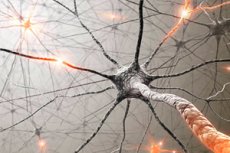New publications
Interactions between adipose tissue and sympathetic neurons contribute to cardiac arrhythmias
Last reviewed: 02.07.2025

All iLive content is medically reviewed or fact checked to ensure as much factual accuracy as possible.
We have strict sourcing guidelines and only link to reputable media sites, academic research institutions and, whenever possible, medically peer reviewed studies. Note that the numbers in parentheses ([1], [2], etc.) are clickable links to these studies.
If you feel that any of our content is inaccurate, out-of-date, or otherwise questionable, please select it and press Ctrl + Enter.

A recent study published in the journal Cell Reports Medicine found a link between the frequency of apnea events during rapid eye movement (REM) sleep and the degree of verbal memory impairment in older adults at risk for developing Alzheimer's disease. Verbal memory refers to the cognitive ability to retain and recall information presented verbally or in writing, and is particularly vulnerable to Alzheimer's disease.
A study conducted by a group of scientists from China examined the independent links between epicardial adipose tissue and the sympathetic nervous system with cardiac arrhythmia using in vitro co-culture of adipocytes, cardiomyocytes and sympathetic neurons. They found that the adipose tissue-nervous system axis plays an important role in arrhythmogenesis.
Abnormalities in the formation and conduction of electrical impulses due to electrical or structural abnormalities in the heart can lead to cardiac arrhythmias. These abnormalities can be either genetic or related to acquired heart disease. Research has shown that sympathetic neurons play a significant role in the pathogenesis of cardiac arrhythmia. Activation of abnormal electrical circuits and disturbances in ventricular repolarization due to inappropriate stimulation of the sympathetic nervous system have been associated with ventricular fibrillation and tachycardia, atrial fibrillation, and even cardiac death.
Recent studies have also shown that epicardial adipose tissue is closely associated with the occurrence of atrial fibrillation, ventricular fibrillation, and ventricular tachycardia. In addition, because epicardial adipose tissue is adjacent to the myocardium without tissue separating their contact, inflammatory cytokines and adipokines secreted by epicardial adipose tissue may alter electrical and cardiac structure. However, whether epicardial adipose tissue and sympathetic neurons interact and how their interaction affects arrhythmogenesis remains unclear.
About the study In the present study, the scientists overcame the limitations presented by the lack of suitable human disease models and the difficulty in obtaining and expanding sufficient amounts of cardiac, neural and adipose tissue by generating cardiomyocytes, adipocytes and sympathetic neurons in vitro from stem cells and establishing co-culture models to study the interactions between epicardial adipose tissue and sympathetic neurons and their effects on cardiomyocytes.
Plasma samples were obtained from the peripheral vein and coronary sinus of 53 participants, including healthy controls and patients with paroxysmal or permanent atrial fibrillation. Epicardial adipose tissue was also obtained from patients with permanent atrial fibrillation who had undergone open heart surgery.
Human pluripotent stem cells and induced pluripotent stem cells derived from adipogenic stem cells, human embryonic stem cells and embryonic fibroblasts were used to establish cell lines and cultures. A sequential induction strategy was used to obtain sympathetic neurons, where neural cells were derived from human pluripotent stem cells and then cultured in differentiation medium.
Adipogenic stem cells were cultured in adipocyte differentiation medium to perform adipocyte differentiation and generate epicardial adipose tissue. Quantitative reverse transcription polymerase chain reaction (qRT-PCR) was used to measure the expression of white, brown and beige adipose tissue markers. A two-dimensional monolayer differentiation technique was used to generate cardiomyocytes from human pluripotent stem cells.
Results Results showed that cardiomyocytes cultured with epicardial adipose tissue and sympathetic neurons, but not with either one, exhibited significant electrical abnormalities, an arrhythmic phenotype, and impaired calcium ion (Ca2+) signaling.
In addition, the study showed that leptin secreted by epicardial adipose tissue can activate the release of neuropeptide Y by sympathetic neurons. This neuropeptide binds to the Y1 receptor on cardiomyocytes and causes cardiac rhythm abnormalities by affecting the activity of calcium/calmodulin-dependent protein kinase II (CaMKII) and the sodium (Na2+)/calcium (Ca2+) exchanger.
Conclusion Overall, the results indicated that interactions between epicardial adipose tissue and sympathetic neurons lead to an arrhythmic phenotype in cardiomyocytes. The study showed that this phenotype is caused by stimulation of sympathetic neurons by leptin secreted by adipocytes, which leads to the release of neuropeptide Y. This neuropeptide binds to the Y1 receptor and affects the activity of CaMKII and the Na2+/Ca2+ exchanger, causing abnormal cardiac rhythms.
